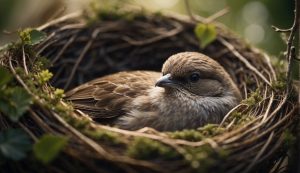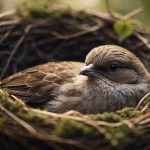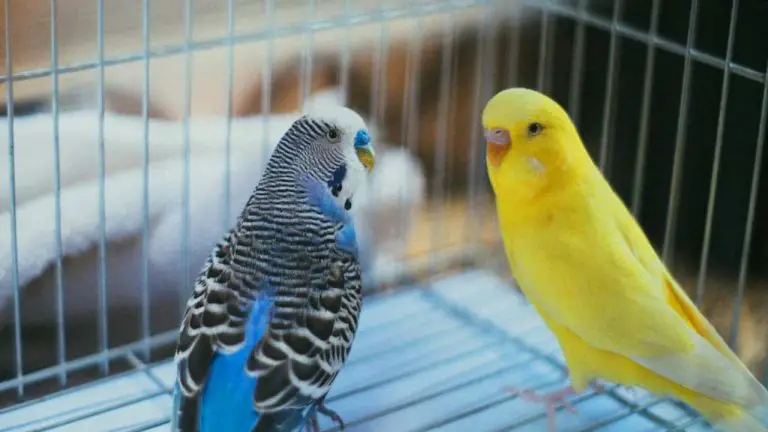My Parakeet Laid an Egg on the Cage Floor! – Key Insights and Care Tips
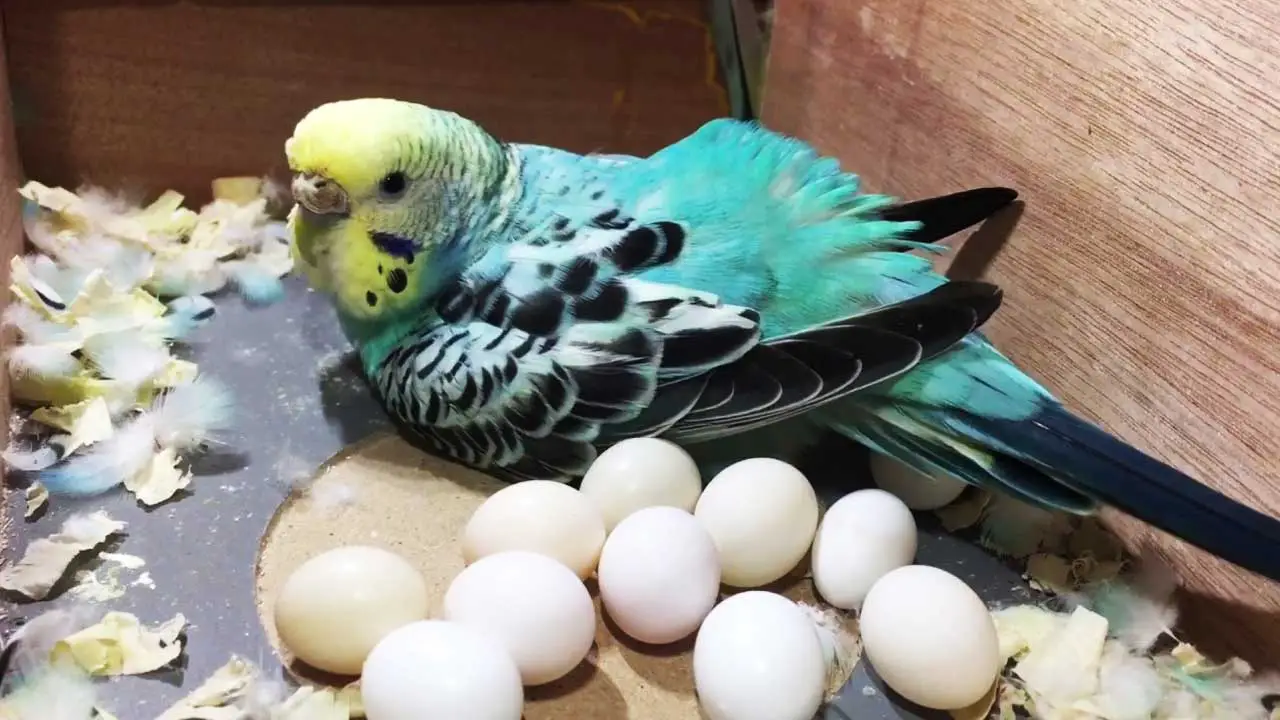
Parakeet owners may be surprised to find an egg laid on the cage floor.
This might seem unusual, but is actually a normal occurrence and a sign of good health for the parakeet.
In this article, we will explore some of the factors involved in parakeet egg laying, along with steps to ensure the well-being of both the parent bird and the potential offspring.
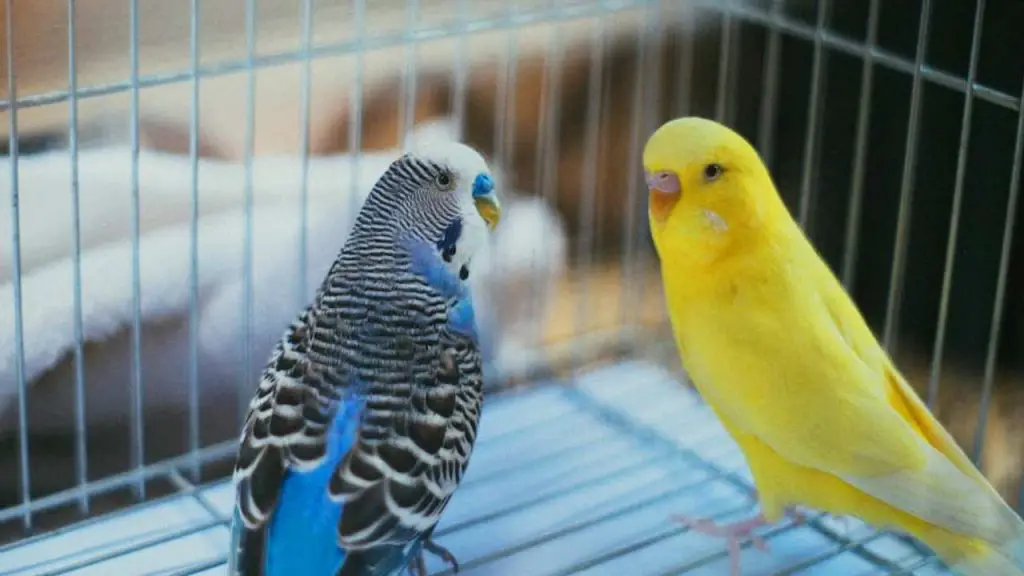
Understanding parakeet egg laying and the nesting process is essential for anyone keeping these birds as pets, especially when an egg is laid on the cage floor.
By learning about the conditions required for successful breeding and hatching, as well as identifying potential issues and solutions, parakeet owners can be prepared to handle such situations properly.
Key Points
- Parakeet egg laying on cage floor is normal and indicates good health.
- Proper nesting and egg incubation are essential for successful breeding.
- Awareness of potential issues and seeking timely avian veterinary assistance can ensure bird well-being.
Table of Contents
Parakeet Egg Laying Basics
Parakeet egg laying is a natural process, and it signifies the good health of your female parakeet. It is important to understand some basics about egg laying to ensure that your parakeet remains healthy and comfortable during this process.
Firstly, female parakeets will lay eggs even without the presence of a male parakeet. However, these eggs will be unfertilised and will not hatch. The egg-laying process can sometimes be triggered by factors such as increased daylight hours, warm temperatures or the presence of a suitable nesting site.
In the wild, parakeets will lay their eggs in a safe and secure location, such as a crevice or hollow in a tree.
In captivity, it is crucial to provide your parakeet with a comfortable nesting area, like a nest box, for their egg-laying process.
This will also help to prevent eggs from being laid on the cage floor, which can be an indication of an uncomfortable or absent nest box.
During the egg-laying period, it is essential to ensure your parakeet has access to adequate nutrition and freshwater. Proper nutrition including calcium, phosphorus, vitamin D, and protein is vital for a healthy egg-laying process. Freshwater is equally important as it can significantly affect egg production in parakeets.
Finally, female parakeets can become protective and hormonal during the egg-laying process. If your parakeet shares a cage with other birds, it is recommended to separate them for their safety and wellbeing.
Understanding and attending to these parakeet egg-laying basics will ensure your female parakeet remains comfortable and healthy throughout the process.
Nesting and Egg Incubation for Parakeets
Providing a Nesting Box
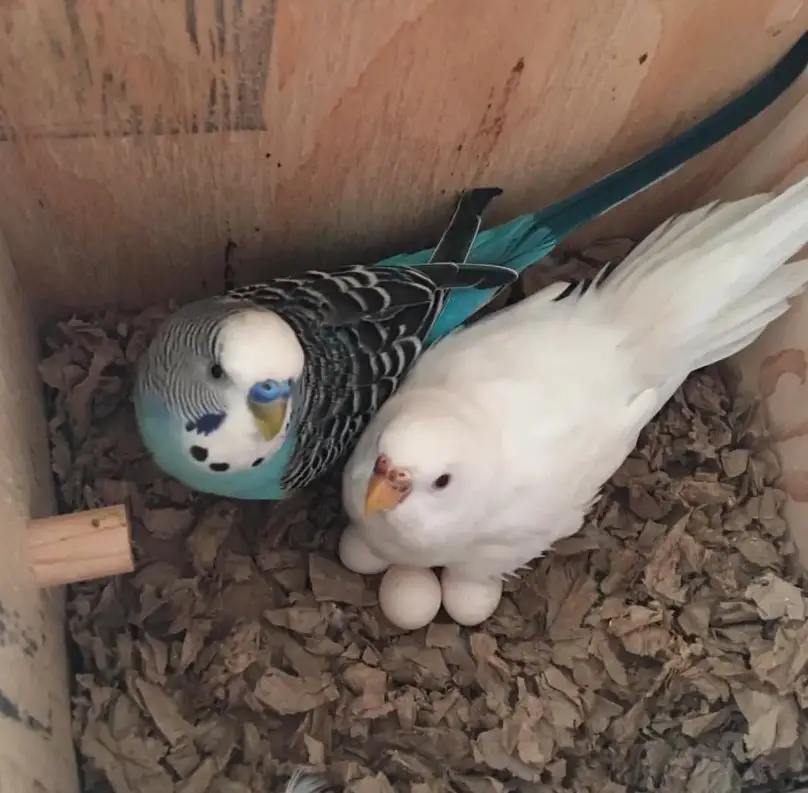
When a parakeet lays an egg, it’s essential to provide them with a suitable nesting box, which allows the bird to properly incubate and hatch the eggs. Start by selecting a nesting box that is the right size for your parakeet; it should be spacious enough for them to move around inside comfortably, but still snug enough to keep the eggs secure.
Place the nesting box in a quiet and secure area within the parakeet’s cage. Fill it with a soft bedding material, such as shredded paper or wood shavings, which will help cushion the eggs from breakages. Allowing your parakeet to access the nesting box, they should instinctively move their egg into this new safe space and begin their incubation process.
It’s crucial to monitor your parakeet’s behaviour during this time, as they might become territorial and protective of their nesting area. Ensure they have enough food and water close by, but give them the necessary space to care for their eggs without interference.
Egg Candling
Egg candling is a useful method for determining if an egg is fertile and developing correctly. To do this, you’ll need a small, bright light source such as a flashlight.
Hold the egg gently between your fingers and carefully place the light source close to the egg’s shell, in a darkened room.
By shining the light through the shell, you can observe the contents of the egg without causing harm.
In a fertile egg, you should be able to see signs of development, such as blood vessels or a growing embryo.
If the egg is not fertile, it will appear clear or have a uniform, yolk-like structure.
Repeating the candling process every few days can give helpful insights into the egg’s development, allowing you to track its progress towards hatching.
Remember that incubation is a delicate process, and handling the eggs should be kept to an absolute minimum to avoid causing any damage or stress to the developing embryos.
Once hatching begins, give your parakeet space and quiet to allow her to care for the new chicks without any added pressure or stress.
Health and Diet for Breeding Parakeets
Breeding parakeets need to maintain good health by following a balanced and nutritious diet. This is particularly important for the female bird, as she will need additional nutrients and energy to produce healthy eggs.
A well-rounded diet for breeding parakeets should consist of high-quality pellets or fortified food, a variety of fresh fruits and vegetables, and a seed mix. This combination provides essential vitamins and minerals for the bird’s overall wellbeing and helps support the egg-laying process.
Calcium is a crucial element for breeding parakeets, especially the females, as it aids in proper egg development. Providing a cuttlebone and calcium supplements to the breeding pair will ensure they get the necessary calcium intake. These supplements can be easily added to their food or water.
Feeding times are also an important factor to consider. The male parakeet will often start regurgitating food to feed the female once she becomes nest-bound. This behaviour is an indication that the female is preparing to lay eggs, and the shared food helps support her during this period.
In addition to diet, maintain a clean and stress-free environment for the parakeets. This will help promote good health and successful breeding. Regularly clean their cage and provide ample space for them to move around and exercise.
By providing the right diet, supplements, and a comfortable environment, you can ensure the health and successful breeding of your parakeets. Remember to be patient and always closely monitor their behaviour to detect any potential health issues that may arise during the breeding process.
Recognising Potential Issues
Parakeets can lay eggs on the cage floor, but it’s important to keep an eye on potential issues that may arise. This section will cover the concerns of egg binding, infertile eggs, and chronic egg-laying.
Egg Binding
Egg binding occurs when a parakeet has difficulty passing an egg, leading to health concerns. Recognising the symptoms is crucial for your pet’s survival. Signs of egg binding include:
- Fast or laboured breathing
- Swelling
- Constipation
- Fluffy feathers
If you notice any of these symptoms, contact an avian vet immediately. They can properly diagnose the problem and ensure a speedy recovery.
Infertile Eggs
An infertile egg won’t hatch, as no embryo is present. Infertile eggs can arise when a female parakeet lays eggs without a mate. If your parakeet lays eggs but you don’t notice any development or movement within the egg after a reasonable time, you may have infertile eggs.
To determine the fertility of a parakeet egg, you can use the “candling” technique. Hold a small flashlight up to the egg in a dark room and inspect its interior. A fertile egg will have visible veins and an embryo, while an infertile egg will appear clear or without discernible veins.
Chronic Egg Laying
Some parakeets may lay eggs more frequently than necessary, resulting in chronic egg-laying. This can eventually lead to health concerns, such as calcium deficiencies and hormonal imbalances.
To prevent chronic egg-laying, ensure that your parakeet has a well-balanced diet and a suitable environment. Limiting their exposure to artificial light can also help regulate their egg-laying cycle.
Keep a close watch on your parakeet’s health and behaviour, especially when they lay eggs. Knowing how to identify these potential issues can make a significant difference in ensuring the well-being of your pet.
Cage Environment and Stimulation
Creating a comfortable and stimulating environment for your pet bird is crucial to their mental and physical wellbeing. In this section, we explore different ways to ensure your parakeet feels secure and entertained, specifically focusing on toys and distractions, as well as privacy and comfort.
Toys and Distractions
Providing a variety of toys and distractions is essential to keep your parakeet engaged and prevent boredom. Here are a few suggestions:
- Swings and ladders: These can be easily added to the cage for your parakeet to climb and perch on, encouraging play and physical activity.
- Bell and foraging toys: Parakeets enjoy exploring different objects with their beak, so toys with bells or foraging compartments can offer an interactive experience.
- Chew toys: To support your pet’s beak health, include various chew toys made from safe materials like wood or cotton rope.
It is important to rotate toys regularly to maintain your pet’s interest and monitor their condition for any wear and tear that could become hazardous.
Note: Refrain from placing mirrors inside the cage, as they can lead to parakeets becoming overly attached or aggressive, ultimately causing stress and disrupting healthy social behaviour.
Privacy and Comfort
Ensuring your parakeet has a comfortable environment with enough privacy is vital to reducing stress, particularly if they have laid an egg on the cage floor. Some tips to achieve this include:
- Nest box: Provide a nest box with suitable nesting material inside the cage. This creates a secure and private space for parakeets to lay their eggs instead of on the cage floor.
- Covering the cage at night: Use a cage cover or light cloth to create a sense of safety and calm during nighttime hours, enabling your parakeet to rest without distractions.
- Cage placement: Position the cage in a peaceful area of your home, away from constant noise and foot traffic, ensuring your pet bird has a calm environment.
By enhancing the cage environment and providing proper stimulation, you can ensure your parakeet remains happy, healthy, and comfortable in their home.
Post-Hatching Care
Newborn Bird Nutrition
When a parakeet lays an egg on the cage floor, it’s important to ensure proper post-hatching care to support the newborn chick’s growth and health. One of the most crucial aspects is providing proper nutrition for the baby bird. A balanced diet plays a vital role in the development of the chick.
Newborn parakeets can be fed with a specially formulated hand-rearing formula in the early days. This formula should be provided in small amounts and at the right consistency to avoid any complications. Gradually, as the chick becomes stronger and starts growing feathers, you can introduce a variety of seed mixes, fresh fruits, and vegetables, which are essential for a healthy diet.
Keep an eye on their intake to make sure the baby bird maintains a steady, age-appropriate weight gain. Remember that male birds could also play a role in feeding the chicks, as both the male and female parakeets share responsibility in the rearing process.
Protective Behaviours
Hens, which are the female parakeets, tend to be protective of their eggs and chicks, particularly when they lay their eggs on the cage floor. It’s essential to create a safe and secure environment for the family, minimising any potential threats. This may involve the isolation of the mother and her offspring from other birds in the enclosure, reducing the risk of aggression or disturbances.
It’s also crucial to keep any predators or pets, such as cats and dogs, away from the birds during this sensitive period. By ensuring a calm and serene atmosphere in the cage, you will allow the mother hen and the male bird to focus on rearing their newborn without any unnecessary stress.
Overall, guaranteeing proper nutrition and a secure environment will support the successful growth and development of the baby bird regarhing the parakeet laid an egg on the cage floor.
Seeking Avian Veterinary Assistance
When your parakeet lays an egg on the cage floor, or your parakeet does something out of the ordinary, you may think about seeking advice from an avian veterinarian, as they specialise in the care of birds.
A veterinarian can provide guidance on proper egg care, help determine if the egg is fertile, and address any potential health concerns related to egg-laying.
When visiting the avian veterinarian, bring the egg along if possible. The veterinarian will be able to examine your parakeet and if possible the egg and determine if it needs any specific care.
If the egg is fertile, they may provide advice on proper incubation, or suggest moving the egg to a safe place within the cage, such as a nest box, so your parakeet can safely sit on it and keep it warm.
Additionally, the veterinarian can examine the parakeet to ensure it is in good health during this process. Laying eggs can be a physically demanding and stressful experience for birds.
The veterinarian can therefore recommend dietary changes, nesting materials, and other adjustments to make the process less stressful and ensure your bird’s wellbeing.
In some cases, a parakeet may experience difficulties while laying an egg, such as becoming egg-bound. If your bird shows signs of straining or distress, it is crucial to consult with an avian veterinarian promptly. They can diagnose the issue, provide appropriate medical treatment and advice to prevent further complications.
Remember, maintaining open communication with your avian veterinarian and seeking their assistance when needed is essential for the overall health and wellbeing of your parakeet during the egg-laying process.
Frequently Asked Questions
Why do budgies lay eggs on the floor?
Budgies may lay eggs on the cage floor if they don’t have a suitable nesting space available.
It is a natural instinct for them to seek a safe, comfortable, and enclosed area to lay and incubate their eggs.
If a nesting box or a similar convenient space is not provided, they might resort to laying their eggs on the cage floor.
How long until parakeet eggs hatch?
Parakeet eggs generally take about 18 to 20 days to hatch.
During this time, the female parakeet will incubate the eggs by keeping them warm and protected.
It is essential to provide a safe and comfortable nesting environment and avoid disturbing the eggs or the female bird during this period.
How many eggs do parakeets usually lay?
Parakeets typically lay a clutch of 4 to 6 eggs, with a gap of about 1 to 2 days between each egg.
However, the number can vary depending on factors such as the bird’s age, health, and living conditions.
What to do after budgie eggs hatch?
After the eggs hatch, provide the parakeet family with a nutritious diet and extra calcium to support the female bird during her post-hatching recovery.
Additionally, ensure that the cage has adequate space to accommodate the growing chicks.
Minimise handling the chicks, as parakeets may become anxious and potentially harm their offspring if they feel threatened.
Do parakeets need a nesting box to lay eggs?
Yes, parakeets do prefer a nesting box when it comes to laying eggs.
A nesting box provides a safe, comfortable, and enclosed space for the parakeet to lay and incubate her eggs.
If a suitable nesting box is not available, they might lay their eggs on the cage floor or other unusual places.
Can parakeets lay eggs without mating?
It is possible for female parakeets to lay eggs without mating, though these eggs will be infertile and will not hatch.
If a single female parakeet starts laying eggs, it is advisable to monitor the bird’s health and potentially discourage further egg-laying through measures such as altering the cage environment or adjusting the diet.


